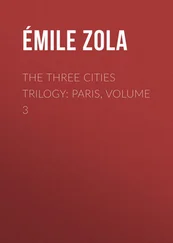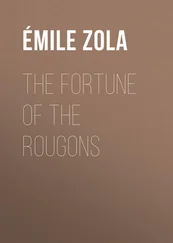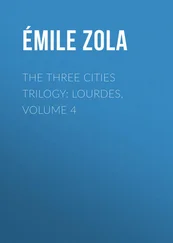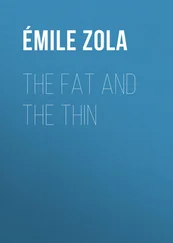Émile Zola - The Dream
Здесь есть возможность читать онлайн «Émile Zola - The Dream» — ознакомительный отрывок электронной книги совершенно бесплатно, а после прочтения отрывка купить полную версию. В некоторых случаях можно слушать аудио, скачать через торрент в формате fb2 и присутствует краткое содержание. Жанр: literature_19, foreign_antique, foreign_prose, на английском языке. Описание произведения, (предисловие) а так же отзывы посетителей доступны на портале библиотеки ЛибКат.
- Название:The Dream
- Автор:
- Жанр:
- Год:неизвестен
- ISBN:нет данных
- Рейтинг книги:3 / 5. Голосов: 1
-
Избранное:Добавить в избранное
- Отзывы:
-
Ваша оценка:
- 60
- 1
- 2
- 3
- 4
- 5
The Dream: краткое содержание, описание и аннотация
Предлагаем к чтению аннотацию, описание, краткое содержание или предисловие (зависит от того, что написал сам автор книги «The Dream»). Если вы не нашли необходимую информацию о книге — напишите в комментариях, мы постараемся отыскать её.
The Dream — читать онлайн ознакомительный отрывок
Ниже представлен текст книги, разбитый по страницам. Система сохранения места последней прочитанной страницы, позволяет с удобством читать онлайн бесплатно книгу «The Dream», без необходимости каждый раз заново искать на чём Вы остановились. Поставьте закладку, и сможете в любой момент перейти на страницу, на которой закончили чтение.
Интервал:
Закладка:
Hubertine, busy at her work, raised her head as Angelique spoke and said:
“You know that if our work is done on Sunday, I have promised to give you a basket of pansies for your garden.”
The young girl exclaimed gaily: “Oh, yes! that is true. Ah, well! I will do my best then! But where is my thimble? It seems as if all working implements take to themselves wings and fly away, if not in constant use.”
She flipped the old doigtier of ivory on the second joint of her little finger, and took her place on the other side of the frame, opposite to the window.
Since the middle of the last century there had not been the slightest modification in the fittings and arrangements of the workroom. Fashions changed, the art of the embroiderer was transformed, but there was still seen fastened to the wall the chantlate, the great piece of wood where was placed one end of the frame or work, while the other end was supported by a moving trestle. In the corners were many ancient tools – a little machine called a “diligent,” with its wheels and its long pins, to wind the gold thread on the reels without touching it; a hand spinning-wheel; a species of pulley to twist the threads which were attached to the wall; rollers of various sizes covered with silks and threads used in the crochet embroidery. Upon a shelf was spread out an old collection of punches for the spangles, and there was also to be seen a valuable relic, in the shape of the classic chandelier in hammered brass which belonged to some ancient master-workman. On the rings of a rack made of a nailed leather strap were hung awls, mallets, hammers, irons to cut the vellum, and roughing chisels of bogwood, which were used to smooth the threads as fast as they were employed. And yet again, at the foot of the heavy oaken table on which the cutting-out was done, was a great winder, whose two movable reels of wicker held the skeins. Long chains of spools of bright-coloured silks strung on cords were hung near that case of drawers. On the floor was a large basket filled with empty bobbins. A pair of great shears rested on the straw seat of one of the chairs, and a ball of cord had just fallen on the floor, half unwound.
“Oh! what lovely weather! What perfect weather!” continued Angelique. “It is a pleasure simply to live and to breathe.”
And before stooping to apply herself to her work, she delayed another moment before the open window, through which entered all the beauty of a radiant May morning.
CHAPTER IV
The sun shone brightly on the roof of the Cathedral, a fresh odour of lilacs came up from the bushes in the garden of the Bishop. Angelique smiled, as she stood there, dazzled, and as if bathed in the springtide. Then, starting as if suddenly awakened from sleep, she said:
“Father, I have no more gold thread for my work.”
Hubert, who had just finished pricking the tracing of the pattern of a cope, went to get a skein from the case of drawers, cut it, tapered off the two ends by scratching the gold which covered the silk, and he brought it to her rolled up in parchment.
“Is that all you need?”
“Yes, thanks.”
With a quick glance she had assured herself that nothing more was wanting; the needles were supplied with the different golds, the red, the green, and the blue; there were spools of every shade of silk; the spangles were ready; and the twisted wires for the gold lace were in the crown of a hat which served as a box, with the long fine needles, the steel pincers, the thimbles, the scissors, and the ball of wax. All these were on the frame even, or on the material stretched therein, which was protected by a thick brown paper.
She had threaded a needle with the gold thread. But at the first stitch it broke, and she was obliged to thread it again, breaking off tiny bits of the gold, which she threw immediately into the pasteboard waste-basket which was near her.
“Now at last I am ready,” she said, as she finished her first stitch.
Perfect silence followed. Hubert was preparing to stretch some material on another frame. He had placed the two heavy ends on the chantlate and the trestle directly opposite in such a way as to take lengthwise the red silk of the cope, the breadths of which Hubertine had just stitched together, and fitting the laths into the mortice of the beams, he fastened them with four little nails. Then, after smoothing the material many times from right to left, he finished stretching it and tacked on the nails. To assure himself that it was thoroughly tight and firm, he tapped on the cloth with his fingers and it sounded like a drum.
Angelique had become a most skilful worker, and the Huberts were astonished at her cleverness and taste. In addition to what they had taught her, she carried into all she did her personal enthusiasm, which gave life to flowers and faith to symbols. Under her hands, silk and gold seemed animated; the smaller ornaments were full of mystic meaning; she gave herself up to it entirely, with her imagination constantly active and her firm belief in the infinitude of the invisible world.
The Diocese of Beaumont had been so charmed with certain pieces of her embroidery, that a clergyman who was an archaeologist, and another who was an admirer of pictures, had come to see her, and were in raptures before her Virgins, which they compared to the simple gracious figures of the earliest masters. There was the same sincerity, the same sentiment of the beyond, as if encircled in the minutest perfection of detail. She had the real gift of design, a miraculous one indeed, which, without a teacher, with nothing but her evening studies by lamplight, enabled her often to correct her models, to deviate entirely from them, and to follow her own fancies, creating beautiful things with the point of her needle. So the Huberts, who had always insisted that a thorough knowledge of the science of drawing was necessary to make a good embroiderer, were obliged to yield before her, notwithstanding their long experience. And, little by little, they modestly withdrew into the background, becoming simply her aids, surrendering to her all the most elaborate work, the under part of which they prepared for her.
From one end of the year to the other, what brilliant and sacred marvels passed through her hands! She was always occupied with silks, satins, velvets, or cloths of gold or silver. She embroidered chasubles, stoles, maniples, copes, dalmatics, mitres, banners, and veils for the chalice and the pyx. But, above all, their orders for chasubles never failed, and they worked constantly at those vestments, with their five colours: the white, for Confessors and Virgins; the red, for Apostles and Martyrs; the black, for the days of fasting and for the dead; the violet, for the Innocents; and the green for fete-days. Gold was also often used in place of white or of green. The same symbols were always in the centre of the Cross: the monograms of Jesus and of the Virgin Mary, the triangle surrounded with rays, the lamb, the pelican, the dove, a chalice, a monstrance, and a bleeding heart pierced with thorns; while higher up and on the arms were designs, or flowers, all the ornamentation being in the ancient style, and all the flora in large blossoms, like anemones, tulips, peonies, pomegranates, or hortensias. No season passed in which she did not remake the grapes and thorns symbolic, putting silver on black, and gold on red. For the most costly vestments, she varied the pictures of the heads of saints, having, as a central design, the Annunciation, the Last Supper, or the Crucifixion. Sometimes the orfreys were worked on the original material itself; at others, she applied bands of silk or satin on brocades of gold cloth, or of velvet. And all this efflorescence of sacred splendour was created, little by little, by her deft fingers. At this moment the vestment on which Angelique was at work was a chasuble of white satin, the cross of which was made by a sheaf of golden lilies intertwined with bright roses, in various shades of silk. In the centre, in a wreath of little roses of dead gold, was the monogram of the Blessed Virgin, in red and green gold, with a great variety of ornaments.
Читать дальшеИнтервал:
Закладка:
Похожие книги на «The Dream»
Представляем Вашему вниманию похожие книги на «The Dream» списком для выбора. Мы отобрали схожую по названию и смыслу литературу в надежде предоставить читателям больше вариантов отыскать новые, интересные, ещё непрочитанные произведения.
Обсуждение, отзывы о книге «The Dream» и просто собственные мнения читателей. Оставьте ваши комментарии, напишите, что Вы думаете о произведении, его смысле или главных героях. Укажите что конкретно понравилось, а что нет, и почему Вы так считаете.












